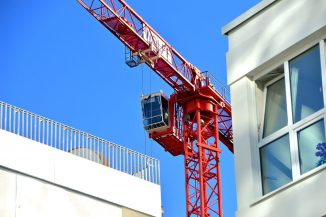
RICS UK Commercial Market Survey, Q4 2020
- Sharpest rise in retail property vacancies since RICS records began in 1999;
- Demand for industrial space continues to increase and now the only sector posting positive results;
- Availability of vacant office space now rising at the strongest rate (net balance terms) since the 2007 global financial crisis.
Activity across the UK commercial property sector ended a tumultuous year with industrial uses strengthening while retail and office vacancy rates rise at record pace – a trend respondents suggest has been exacerbated by the response to the COVID-19 pandemic.
Overall, a -27% net balance of contributors reported a fall in tenant demand – a rate that is somewhat lower than the falls reported over Q2 and Q3. While this might signal a small silver lining, when looking at individual sectors, the rate of decline has not shown any signs of easing in the retail and office sectors, which posted net balances of -78% and -63% respectively.
The industrial sector was solely responsible for delivering the only positive outcome, with a net balance of +41% of respondents citing a rise in occupier demand.
The contrast in fortunes is also evident in availability, as the retail sector posted the sharpest uptick in vacant space (in net balance terms) since RICS records started in 1999. The availability of office space also rose, seeing the strongest rate of increase since the global financial crisis. At the other end of the scale, industrial availability continued to decline.
With decreasing supply in industrial space, twelve-month rental growth expectations were upbeat, with both prime and secondary industrial rents anticipate to see solid growth, returning net balances of +66% and +35% respectively. Twelve-month rental projections showed no sign of improvement across retail, and similarly, expectations remain downbeat across the office sector.
Looking at alternative commercial real estate asset classes*, both rents and capital values are seen falling sharply across the hotel sector in the coming year. Meanwhile, expectations are also firmly negative for student housing over the same time frame. Multifamily housing displays a flat to marginally positive outlook for both rents and capital values, while aged care facilities and data centres are anticipated to see solid growth in the year to come.
Tarrant Parsons, RICS Economist, said: “With the UK economy facing a further setback towards the end of the year, hampered by a renewed tightening in restrictions, it is unsurprising that conditions remain challenging across portions of the commercial real estate market.
“Both the office and retail sectors continue to see occupier and investor demand diminish, with expectations for rents and capital values remaining deeply negative for the time being. Having said that, the industrial sector seems to go from strength to strength.
“Indeed, supported by more favourable structural dynamics, demand for industrial/logistics space accelerated noticeably over the latest survey period. As a result, already positive rental growth projections across the sector were revised higher in the Q4 results.”
*Multifamily; hotels; data centres; aged care facilities; student housing





